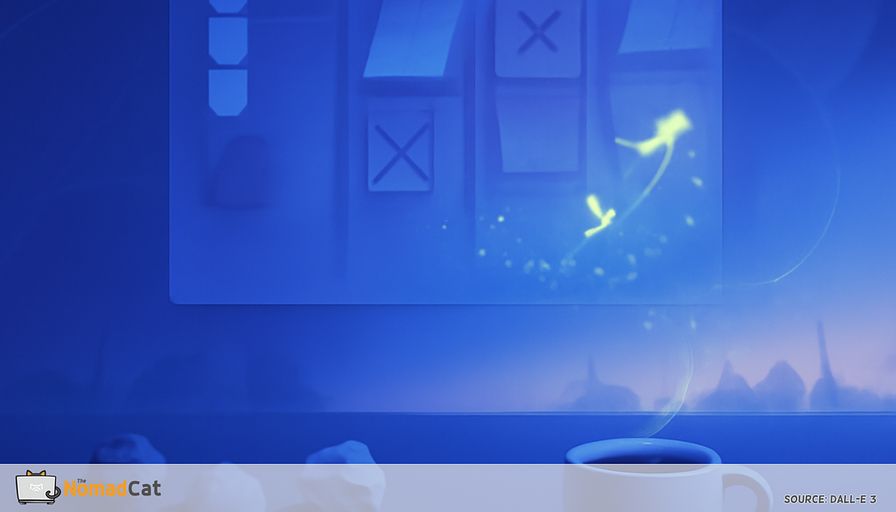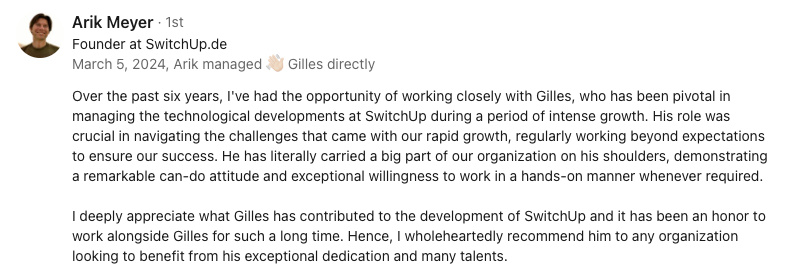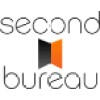Abstract:
The article explores the concept of the "anti-portfolio," encouraging professionals—especially tech minimalists—to share not only polished successes but also failed experiments, unfinished projects, and lessons from setbacks as part of their public work portfolios. Drawing inspiration from venture capital firms like Bessemer Venture Partners, which publicly list missed opportunities, the anti-portfolio approach reframes failures and near-misses as valuable learning experiences that foster authenticity and trust. The article details practical ways to tell these stories, such as iteration diaries, mini post-mortems, and honest reflections on what could be done differently, all designed to keep the sharing process sustainable and pressure-free. It emphasizes light workflows using tools like Notion or Trello, promoting regular, honest content even when major wins are scarce. Unique real-world examples—including Buffer’s transparent updates after setbacks, Raygun’s CEO turning a failed launch into consulting leads, and personal anecdotes from Phil Sturgeon and Swizec Teller—demonstrate how radical transparency builds community, increases engagement, and attracts new opportunities. The article provides checklists and prompts for capturing lessons, highlights the psychological benefits of openness, and underscores how anti-portfolio storytelling signals maturity and relatability, ultimately making a minimalist brand more trustworthy and resilient. By weaving together practical advice, industry data, and distinctive case studies, the article shows that sharing honest stories—both successes and failures—can drive real connections and sustainable professional growth.
When I think about portfolios, I picture all those shiny case studies and polished success stories we’re supposed to parade around. But, let’s be honest—most of my work as a solo tech professional isn’t a parade. It’s more like a messy kitchen after a failed soufflé: experiments that fizzled, features that never shipped, and those “almost” opportunities that slipped through my fingers like flour. I’ve learned that sharing these moments—the anti-portfolio—is not just honest, it’s practical. It’s how I stay visible, build trust, and keep my sanity (and sometimes, my bank account) intact.
I want to show you how I use anti-portfolio storytelling to turn unfinished projects and failed experiments into useful content. I’ll break down how my approach differs from the classic “look how great I am” portfolio, why this style fits my minimalist tech life, and share simple story types that keep things honest and sustainable. I’ll also give you the workflows and checklists I use to keep content flowing—even when wins are rare and the only thing flowing is my coffee.
Along the way, I’ll share real examples from my own career: the time a cross-border e-commerce feature bombed but led to a better retention strategy, or how a failed partnership in Beijing turned into a new opportunity. I’ll sprinkle in some humor, a bit of French flavor (pardon my English), and the occasional gardening metaphor—because, like plants, not every idea grows as planned.
By the end, I hope you’ll see how sharing honest lessons can spark real engagement, build community, and maybe even open new doors—without the pressure to be perfect or always “crushing it.”
What is an anti-portfolio?
The anti-portfolio isn’t just a list of missed investments (leave that to the VCs). For me, it’s a highlight reel of what didn’t go as planned: failed experiments, pivots that didn’t pay off, or projects that never saw the light of day. I started keeping my own anti-portfolio after a product launch in Berlin flopped—hard. I was CTO, and we’d spent months building a feature that customers ignored. At first, I wanted to hide it. But when I shared the story (and the lesson), I got more engagement and trust than from any “success” post.
These stories show honest growth. They remind me—and my audience—that learning comes from more than just winning. And, frankly, they’re more fun to write. Not every project is a baguette fresh from the oven—sometimes it’s a bit stale, but still worth sharing.
How anti-portfolio stories are different
Traditional portfolios are all about achievements: projects shipped, goals met, results that sparkle. My anti-portfolio is more like showing you the kitchen after a failed recipe: scrapped prototypes, experiments that flopped, and the lessons I picked up along the way. Here’s how I see the difference:
Feature Traditional portfolio Anti-portfolio storytelling Focus Successes, achievements Failures, rejections, pivots Structure Problem-solution-impact Story-based, lesson-focused Value Proof of skills, reliability Authenticity, adaptability Branding impact Professionalism, competence Transparency, relatabilityThis approach is especially useful for tech minimalists like me. I care more about substance than flash. While a normal portfolio is polished and all about outcomes, my anti-portfolio shows the messier, more human side of work—making room for learning and openness.
Why anti-portfolio fits my minimalist tech life
Lowering the pressure
As a solo founder, I used to feel crushed by the pressure to always have something impressive to share. But let’s be real: sometimes the only thing I “ship” is a bug. Anti-portfolio storytelling lets me share the smaller lessons and unfinished efforts along the way. I don’t have to wait for a major win—I can stay visible, even if the big wins are rare. This is a lifesaver for my mental health. After burning out in my first year freelancing (hello, 80-hour weeks and ramen for dinner), I realized that honest, steady sharing is more sustainable than chasing perfection.
Staying visible without burning out
There are seasons when work is slow, or when I’m heads-down on a project that may never launch. In those times, anti-portfolio stories keep me present online and remind others (and myself) that I’m still in the game. Plus, let’s not ignore the financial reality: as an independent, if I disappear, so do the leads. Sharing honest lessons is my way of staying relevant without feeling like a fraud.
Building real connection
Sharing failures or unfinished projects does more than fill a content gap—it makes me more human. I’ve had clients mention my openness as a reason they reached out. People are drawn to professionals who share their real, imperfect stories. It’s a relief, honestly, to drop the mask and just be myself. And yes, it fits my minimalist values: sustainability, authenticity, and a healthy dose of “c’est la vie.”
Story types I use in my anti-portfolio
Almost-wins and near-misses
I can’t count how many times I’ve spent weeks on a feature, gotten 90% there, and then realized it wasn’t a good fit. Or the time I almost landed a big client in Beijing, only to have the deal fall through at the last minute. These near-misses aren’t just stories of disappointment—they show adaptability and good judgment. I try to frame them as steps in my journey, not dead ends.
Here’s my quick structure:
- Setup: What was the original goal or idea?
- Challenge: What problem or change showed up?
- Action: What did I do or try next?
- Lesson: What did I learn, and how might it guide future work?
For example, when a cross-border e-commerce feature tanked, I shared how we pivoted and ended up improving customer retention by 15%. That story got more traction than any “win” I posted that year.
Iteration diaries and mini post-mortems
I keep an “iteration diary”—just a daily note about how an idea, feature, or project changed along the way. Sometimes it’s as simple as, “Tried automating onboarding, hit API limits, found a workaround.” These quick updates are gold for sharing progress without fuss.
My mini post-mortem is even simpler:
- What was supposed to happen?
- What actually happened?
- What did I learn?
No need for long essays—a paragraph is enough. I started this habit after a failed launch in Berlin. It helped me spot patterns (and avoid repeating mistakes). Plus, it’s a great way to show clients and collaborators that I’m always learning.
What I’d do differently and behind-the-build peeks
After every project or sprint, I jot down a “what I’d do differently” note. Sometimes it’s, “Next time, I’d test integrations earlier to avoid late surprises.” These nuggets spark conversation and show I’m not afraid to admit I don’t have all the answers.
I also like sharing behind-the-build peeks: messy drafts, trade-offs, or limits. Maybe a feature was dropped because the deadline was tight, or a tool didn’t pan out. Simple prompts help me spot sharing moments:
- What surprised me this week?
- What was the biggest obstacle, and how did I get past it?
- What did I try that didn’t work?
- What would I do differently next time?
Just a few of these, and I have plenty of honest stories to share.
My minimalist sharing workflow
Quick capture and review
After every project or sprint, I take five minutes to jot down lessons. I use Notion (sometimes Trello, if I’m feeling fancy) to log insights right away. No heavy documentation—just a note with the project name, date, and a short theme. When I was CTO in Berlin, I set up a Kanban board for this. It helped me spot which lessons were worth sharing and which were better left in the “archive of shame.”
Every month, I review my notes. I ask:
- Is this lesson useful to others?
- Is it different from what I’ve already shared?
If yes, I keep it. If not, I let it go. This keeps me from drowning in old notes that don’t matter.
One lesson, many formats
I love repurposing. A single anti-portfolio insight can fill lots of content channels. Here’s my workflow:
1. Capture the lesson in my archive.
2. Shorten it into a tweet.
3. Add context for LinkedIn.
4. Turn it into a newsletter tip or short video.
For example, when a feature failed in my e-commerce platform, I tweeted about the lesson, posted a longer story on LinkedIn, and shared a detailed breakdown in my newsletter. This way, I stay visible without chasing new stories every week.
Creating conversations and community
I’ve noticed that stories about failures or lessons get more comments and shares than regular promo posts. When I shared about a failed partnership in Beijing, I got messages from others who’d been through the same thing. Sometimes, these open stories invite feedback or even collaboration. I’ve had people reach out with advice, or to share their own war stories. It’s like open-source culture—sharing the messy bits brings people together.
Building trust with transparency and humility
Transparency sets me apart
I’ve seen firsthand that transparency and humility build trust. After a failed launch, I posted an honest update. Instead of losing credibility, I gained followers and even landed a consulting gig. Clients have told me they chose to work with me because I “don’t pretend to be perfect.” Sharing mistakes and what I learned sets me apart from the endless stream of “success stories” on LinkedIn.
Why honest brands win trust
Industry studies back this up. MIT Sloan found that professionals who share failures are seen as more relatable and credible. For minimalists like me, every story matters more. Sharing lessons with intent deepens the connection and trust I have with others.
Real-world results
I’ve seen the benefits myself. After sharing a tough post-mortem, I got more positive responses than from any polished case study. According to a 2022 Dev.to survey, 68% of tech professionals feel more positive toward those who share failures and learning experiences. Stack Overflow says over 40% of developers are more open to working with people who discuss setbacks openly. For me, this has meant more collaboration, more trust, and yes, more work.
Honest stories lead to opportunities
I’ll be honest: sharing failures is scary. The anxiety before hitting “publish” on a post about a failed launch is real. I worry people will think I’m incompetent. But every time, I’m surprised by the support and new opportunities that follow. After one particularly rough pivot, I shared the story and ended up connecting with a partner who helped me turn things around. Sometimes, relief comes not from fixing the problem, but from knowing I’m not alone.
Sharing thoughtfully, not oversharing
Of course, I’m careful. I link failures to how I’ve grown or what I learned. I’m selective—I don’t share every embarrassing detail. I avoid blaming others or making excuses. I keep the tone positive and professional. And I use a checklist to keep personal details out of work stories. Thoughtful sharing ties each setback to growth, skipping anything not useful to others.
Anti-portfolio stories show maturity
Handled well, anti-portfolio stories show maturity—not incompetence. The Edelman Trust Barometer and discussions on Hacker News point out that people value self-awareness and openness about improvement. When I share anti-portfolio stories intentionally, I show that my minimalist brand is both real and resilient.
My anti-portfolio checklist
Quick prompts and capture routines
I use lightweight tools and a few pointed questions to collect lessons. After each project or sprint, just a few minutes of reflection is enough. My prompts:
- What went well?
- What didn’t?
- What surprised me?
- What could be improved?
I do this weekly or monthly, so I keep valuable insights handy without a big time cost. Sometimes it’s a digital note, sometimes a voice memo, sometimes just a scribble on a sticky note. The easier my process, the more likely I’ll keep at it.
Tagging, organizing, and reviewing
I tag lessons by project, theme, or date and keep them in a central spot (Notion, Trello, or a shared doc). I use uniform templates. Every few months, I review to spot which stories to reshare or update. A calendar reminder helps. During review, I update or flag stories that can be shared again or shaped for a different format.
Do’s and don’ts for sharing
Here are my simple rules:
Do’s Don’ts Connect failure to growth or actionable value Overshare personal or irrelevant info Be selective and strategic Blame others or make excuses Keep it constructive and professional Dwell on setbacks or self-deprecate Offer clear, actionable insights Repeat the same story without updatesKeeping stories updated with new lessons helps my anti-portfolio stay current. With a bit of regular review, my collection keeps pace with my latest thinking.
Turning setbacks into brand assets
Consistent reflection brings engagement
Let me tell you, honest lessons work. Phil Sturgeon blogged about his challenges and failures in API design and sustainability. Swizec Teller posted frequent “what I learned” updates, even when projects didn’t land. I’ve done the same—sharing the story behind a failed e-commerce feature or a tough pivot in Beijing. Over time, this honesty built a loyal audience. Readers trust me not because I’m perfect, but because I’m real. For me, this transparency has led to more trust, newsletter signups, and consulting opportunities.
Transparency brings results
This doesn’t require fancy production or round-the-clock content creation. The results speak for themselves:
- Inbound leads grew as clients pointed to transparency as the reason they reached out (like with Paul Jarvis or Jonathan Stark)
- Content engagement climbed, with more comments and shares from readers who liked the honesty
- Newsletter and podcast numbers rose, tied to the trust that openness builds
Honest stories, not high production
None of this depends on being polished—just honest, regular stories. Minimalist anti-portfolio storytelling works because it’s about showing up with consistency and humility, not about looking perfect. Having built teams and companies across several countries, I’ve learned: a plain, honest story about an experiment that failed or a tough pivot can spark more real conversations than a flawless win. The value comes from the connections and trust built in those honest moments.
Honest stories—the good and the not-so-good—bring real value to any career. My anti-portfolio proves that even unfinished projects or tough pivots can teach as much as polished success stories. Sharing these moments helps build trust, encourages honest engagement, and keeps things sustainable, especially for minimalists like me. With some simple routines and a touch of transparency, sharing insights becomes easier, even if big wins are rare. People often respond more to genuine lessons than to perfection, and opportunities tend to grow from that openness. Every story, even a messy one, can help someone learn or connect. And if nothing else, it makes for a good story over coffee—or, if you’re like me, a glass of Bordeaux.














